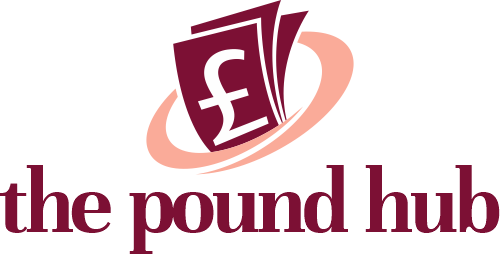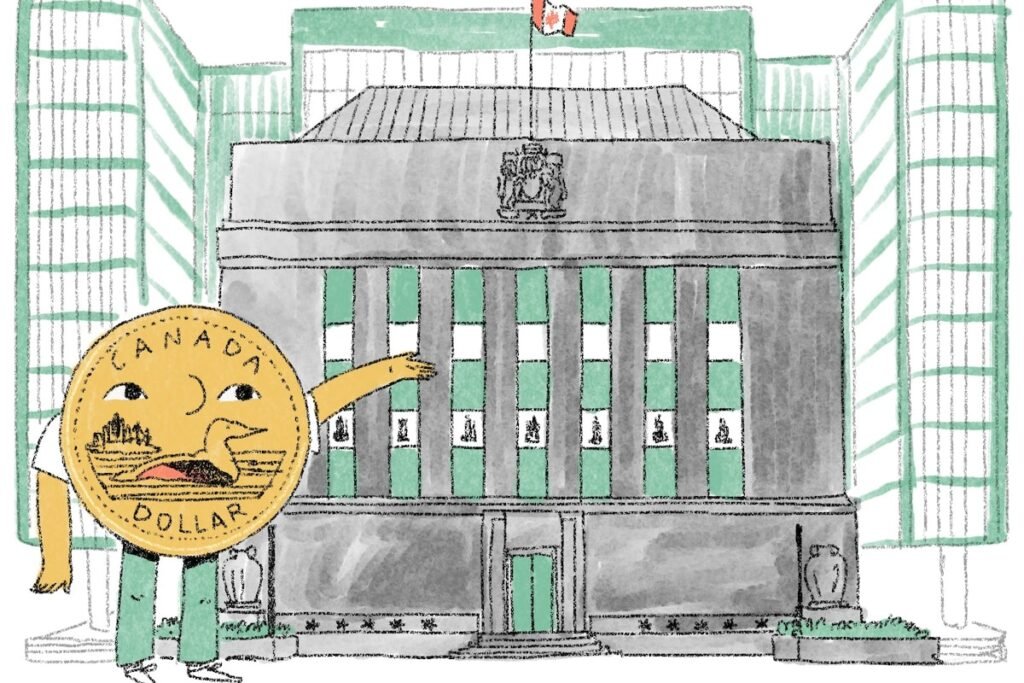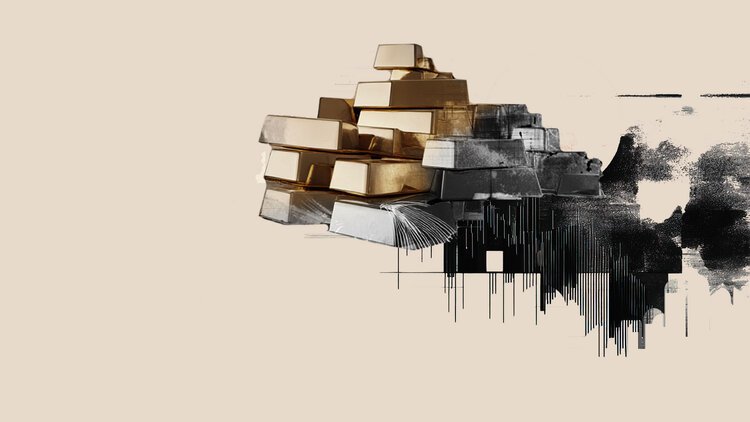Wow, Bay Street sure is busy. I wonder who that sad coin is.
I’m a loonie.
Let me tell you about the tough few months I’ve had.

I’ve fluctuated over the decades. I was worth as little as 61.8 US cents in 2002 and as much as US$1.10 in 2007. I was even named the Newsmaker of the Year for 2007 by Time magazine. Ahem, the Canadian edition of Time Magazine
You might think the Canadian and U.S. dollars being at par would be a good thing, but parity doesn’t always benefit everyone.

Economists even call me a “shock absorber,” taking hits so other parts of the economy don’t have to. If the U.S. imposes tariffs on Canadian goods, for example, they’ll become less competitive in the American market. But if I depreciate alongside the tariffs, it should help offset that competitive disadvantage.

Maybe we should go back to why I’m weak in the first place.
I’m a “floating” currency, which means the Bank of Canada doesn’t fix my value against other currencies.
This is different from the BoC’s approach to my domestic value. It raises or lowers interest rates to try to keep the consumer price index in Canada growing at 2 per cent each year. (That’s inflation.)
Instead, my exchange rate is determined in global currency markets depending on how much foreign investors, businesses and governments want me.
This is influenced by:
- How fast the Canadian economy is growing and the rate of inflation
- How high interest rates are in Canada compared to other countries
- Whether foreigner investors want Canadian assets, like stocks and bonds
- The price of oil and other commodities (although I’m less of a petrocurrency than I used to be)


Today, I’m being hit from multiple angles:
- Economic growth is sluggish in Canada compared to the U.S.
- The Bank of Canada has cut interest rates more than the U.S. Federal Reserve.
- Oil prices are fairly low.
But the biggest thing weighing on me is the threat of U.S. tariffs. If President Donald Trump makes it more expensive for Americans to buy Canadian goods, fewer Americans will want me and my exchange rate will drop further.
To be fair, this is as much about the strength of the U.S. dollar as it is about little old me.
- The U.S. economy keeps on churning out strong data and the Fed isn’t in a rush to cut interest rates.
- Investors think Trump’s tariffs and tax cut agenda will fuel inflation and increase the U.S. government deficit. That’s pushing up U.S. bond yields, taking the greenback higher.
And it’s not just me: the euro, the British pound and the Japanese yen are all struggling against the strong greenback. Look at the poor Mexican peso, who is getting whacked by tariff threats as well.
I’m actually holding my ground against other currencies fairly well, thank you very much.
What happens to me this year will depend on different forces.

The biggest downside risk for me is tariffs. If Trump slaps across-the-board levies on Canadian goods, I could fall a lot further, perhaps to the low-to-mid-60s last seen in the early 2000s.
On the flipside, I could strengthen if the U.S. Federal Reserve starts cutting interest rates again, Canada dodges the worst of the U.S. tariffs or Canada’s upcoming federal election ushers in a pro-growth agenda.

Ultimately my exchange rate is always changing alongside perceptions of Canada’s economic strength and weakness. FX markets can overreact in one direction, then overcorrect in the other. It’s partly about the data, and partly about the vibes.
My current low exchange rate might not benefit everyone, but I’ve been through it all. In the past, I’ve hit rock bottom before I rise back up.






